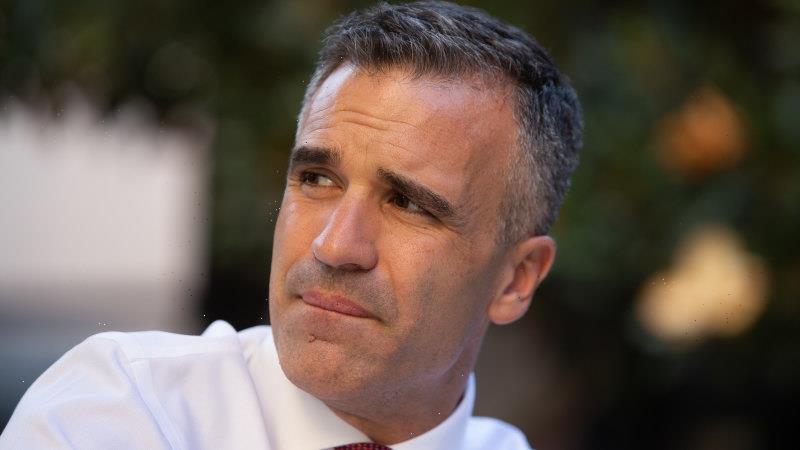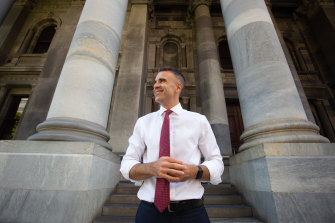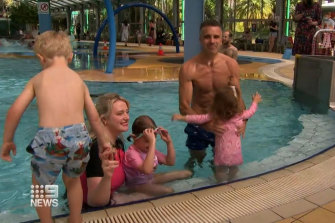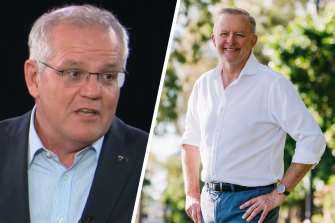A few stun grenades have been thrown by the Morrison government at the Albanese opposition recently. But now, the South Australian state election result has gone off like one in the Liberal Party nationally as it prepares for the federal election expected to be held on May 14, just eight weeks away.
A year ago, South Australian Labor leader Peter Malinauskas was seen as an asset for the Coalition. Not any more.Credit:Brett Hartwig
The first shock is that the published opinion polls were right. They pointed to a clear win by state Labor leader – and now SA premier-elect, Peter Malinauskas – and that’s exactly what happened.
It eliminated lingering Morrison government hopes that polls pointing to the same fate for it nationally might be as wrong as they were at the 2019 election. The tweaks made by anguished pollsters after their 2019 embarrassment appear to have worked. If the national figures maintain their current trajectory up to the election, power will change hands in Canberra within weeks.
The second shock is that an opposition leader can go from zero to hero in the space of a year.
Twelve months ago, influential Adelaide commentator Matt Abraham said Malinauskas was “putting us to sleep”, and wondered aloud whether SA Labor needed someone new who could engage voter attention. The election was winnable but only if “Mali” changed what he was doing, Abraham said.
Phwoar and order candidate: Malinauskas pool photo attracted plenty of attention during the campaign.Credit:Nine News
A year later, during the SA election campaign, Abraham said Liberal premier Steven Marshall was being “outplayed by the hugely-energetic Malinauskas campaign” as Labor staked out health as its battleground with “a fat chequebook and simple clear messaging”.
The closest thing Australian politics has had to a Colin Firth pond scene also played a role. Promising a new aquatic centre, the sporty Malinauskas stripped to his board shorts and played in the pool with his toddler daughter alongside ALP candidate Lucy Hood and her son. It brought a “phwoar” factor not experienced in SA politics since Don Dunstan wore pink shorts skipping up the steps of Parliament House in 1972.
On Saturday, Malinauskas became premier-elect and Hood took a seat off a sitting Liberal, contributing to Labor’s clear win.
Malinauskas had indeed changed what he was doing. He was demonstrating, literally, fitness for government. Steven Marshall said he himself wasn’t into “Putin-style” campaigning but that the “Mali” pool pic had made him “hang my head in shame” and commit to fewer carbs.
Drawing attention to Anthony Albanese’s healthy new look may have backfired on Scott Morrison.Credit:Sky News/James Brickwood
Malinauskas had chiselled away at bettering his opponent on both the theatre and substance of politics, and did so just in time for the election.
He looked fitter to govern than Marshall and, crucially, crafted and communicated substantive policy tightly focused on immediate voter needs – like health, and future-oriented needs, like new generation jobs. His $593 million green hydrogen plant pledge for regional Whyalla was a campaign centrepiece.
Malinauskas’ Labor wasn’t a small policy target. It wasn’t a big policy target. It was a smart policy target, with a substantive offering crafted in a way that made it hard to attack.
These things are, of course, contextual. Marshall’s decision to open SA’s borders just as Omicron arrived reversed his reputation for good pandemic management. Ambulance “ramping”, queued up with patients who couldn’t be admitted to Adelaide’s creaking hospital system, symbolised Marshall’s failure.
That inadequate COVID-19 management has taken its first victim in Australian politics is a significant development. Prime Minister Scott Morrison looks set to be next.
The Prime Minister is searching for the issue that can knock his opponent, Labor leader Anthony Albanese, down a few pegs to give the Coalition a chance to rebound in the campaign, Morrison’s alleged specialty. But this claim is based on just one victory where, on the back of voters’ scant knowledge of him at the time, he successfully sold a benign “daggy dad” persona to the electorate.
Morrison is now well known to voters. He’s the indifferent Morrison of the bushfire disaster, the complacent Morrison of the COVID-19 vaccine strollout, the bumbling Morrison who mishandled the Brittany Higgins and Christian Porter situations, and the absent Morrison of the current flood disaster.
The common factor is incompetence. It was the perception of incompetence, up against a better alternative, that caused the Marshall Government to fall on Saturday night.
A year ago Albanese, like Malinauskas, was considered an asset by the Coalition governments they sought to defeat. Not any more.
Three Morrison stun grenades against Albanese have failed to work so far.
The first, that Albanese is weak on China policy, was laughed out of town.
The second, that Albanese’s fitness drive made him somehow inauthentic next to dad-bod Morrison, simply drew attention to how much better the Labor leader looks these days, especially compared to the PM.
The third – that bullying claims by the late Labor senator Kimberley Kitching represent some epochal fail on Labor’s part – has been eclipsed by the dramatic SA election result.
In any case, it was a bit rich from a government led by a man whose biographer, Annika Smethurst, quoted an unnamed male government minister saying Morrison “couldn’t stand” some of his female colleagues and “hated” working with former cabinet minister Kelly O’Dwyer.
Instead of casting a dubious eye on Anthony Albanese, the electorate – now tuning into Scott Morrison’s increasingly shrill attacks on Labor – may be wondering about the incumbent’s fitness to govern.
Political historian Dr Chris Wallace is an associate professor at the University of Canberra. Sean Kelly is on leave.
Most Viewed in Politics
From our partners
Source: Read Full Article



